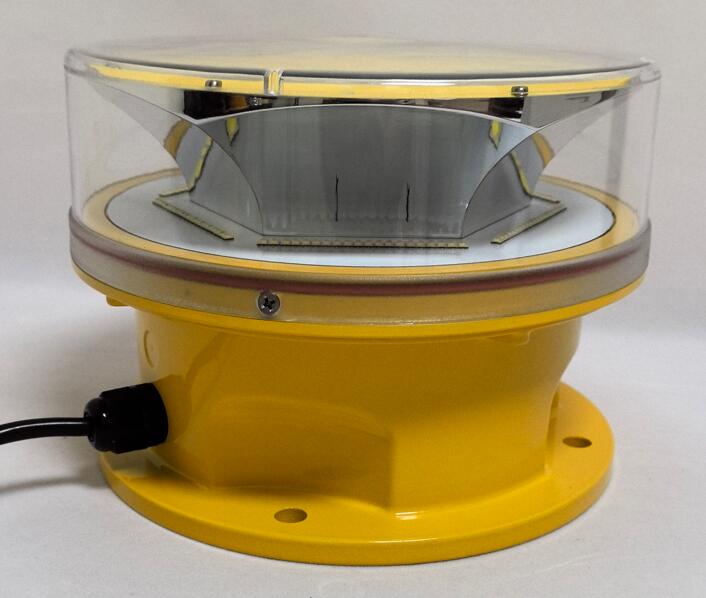Aircraft Warning Lights on Towers: Guardians of Aviation Safety
In an era of increasing urban development and tall structures, aircraft warning lights on towers play a crucial role in preventing collisions and ensuring safe air navigation. These specialized lighting systems mark high-rise buildings, communication towers, and other tall obstructions, making them visible to pilots in all weather conditions. This article examines the technology, regulations, and operational importance of aircraft warning lights on towers, highlighting their critical function in modern aviation safety.
The Essential Role of Aircraft Warning Lights on Towers
Aircraft warning lights on towers serve three primary safety purposes:
Obstacle Identification – Clearly marking tall structures to prevent collisions

Nighttime Visibility – Ensuring towers are visible during darkness or low-visibility conditions
Regulatory Compliance – Meeting international aviation safety standards
| aircraft warning lights on towers |
Without properly installed aircraft warning lights on towers, the risk of aircraft collisions with structures would increase significantly, particularly during instrument flight conditions or in poor weather.
Types of Aircraft Warning Lights on Towers
1. Red Obstruction Lights (L-810)
Steady-burning or flashing red lights
Used for structures under 200 feet (61 meters)
Visible up to 5 miles (8 km)
2. Medium-Intensity White Strobe Lights (L-865)
High-visibility daytime lighting
| aircraft warning lights on tower |
Used for structures between 200-500 feet (61-152 meters)
Flash rate of 40-60 pulses per minute
3. High-Intensity White Strobe Lights (L-856)
For towers exceeding 500 feet (152 meters)
Visible up to 20 miles (32 km) in clear conditions
Used in combination with red lights at night
4. Dual Lighting Systems
White strobes for daytime, red lights for nighttime
Automatic switching via photocell sensors
Most common configuration for tall towers
Regulatory Standards for Installation
Aircraft warning lights on towers must comply with strict international regulations:
ICAO Annex 14 – Specifies light intensity, color, and flash patterns
FAA AC 70/7460-1L – US requirements for obstruction lighting
EASA CS-ADR-DSN – European standards for obstacle marking
IEC 61820 – Electrical safety certifications
Key installation requirements include:
✔ Uniform spacing of lights along the tower structure
✔ Redundant power systems for reliability
✔ Proper aiming angles for maximum visibility
✔ Regular maintenance to ensure continuous operation
Technological Advancements
Modern aircraft warning lights on towers incorporate several innovations:
LED Technology
80% more energy efficient than incandescent systems
10+ year lifespan with minimal maintenance
Improved visibility with precise beam control
Solar-Powered Options
Ideal for remote tower locations
Battery backup for continuous operation
Reduced infrastructure requirements
Smart Monitoring Systems
Remote fault detection via IoT connectivity
Automated brightness adjustment
Real-time status reporting to maintenance teams
Advanced Optics
Wider viewing angles for better coverage
Reduced light pollution
Customizable flash patterns
Installation Best Practices
Proper installation of aircraft warning lights on towers requires:
Structural Analysis – Ensuring tower can support lighting system weight
Glare Reduction – Preventing light interference with nearby communities
Light Spacing – Complying with aviation authority spacing requirements
Environmental Considerations – Accounting for wind, ice, and temperature extremes
Maintenance protocols should include:
Monthly visual inspections
Quarterly electrical testing
Annual photometric verification
Immediate repair of damaged units
Special Applications
1. Wind Turbine Lighting
Specialized lighting for rotating blades
Radar-activated systems to minimize light pollution
2. Urban Skyscrapers
Low-profile lighting designs
Architectural integration requirements
3. Offshore Platforms
Saltwater-resistant fixtures
Hazardous location certifications
4. Temporary Structures
Portable lighting systems
Rapid deployment solutions
Future Developments
Emerging technologies in aircraft warning lights on towers include:
LiDAR-Enhanced Systems – Automatic obstacle detection and lighting adjustment
Predictive Maintenance – AI-driven failure prediction
Dynamic Lighting – Weather-adaptive intensity control
Space-Based Monitoring – Satellite verification of lighting compliance
Aircraft warning lights on towers represent a critical component of global aviation safety infrastructure. As structures continue to grow taller and airspace becomes more congested, these lighting systems will play an increasingly important role in collision prevention. Through continued technological innovation and strict adherence to international standards, aircraft warning lights on towers will maintain their vital function as silent guardians of aviation safety – day and night, in all weather conditions. The aviation industry's commitment to improving these systems ensures they will continue to protect lives while accommodating future urban development and air traffic growth.
